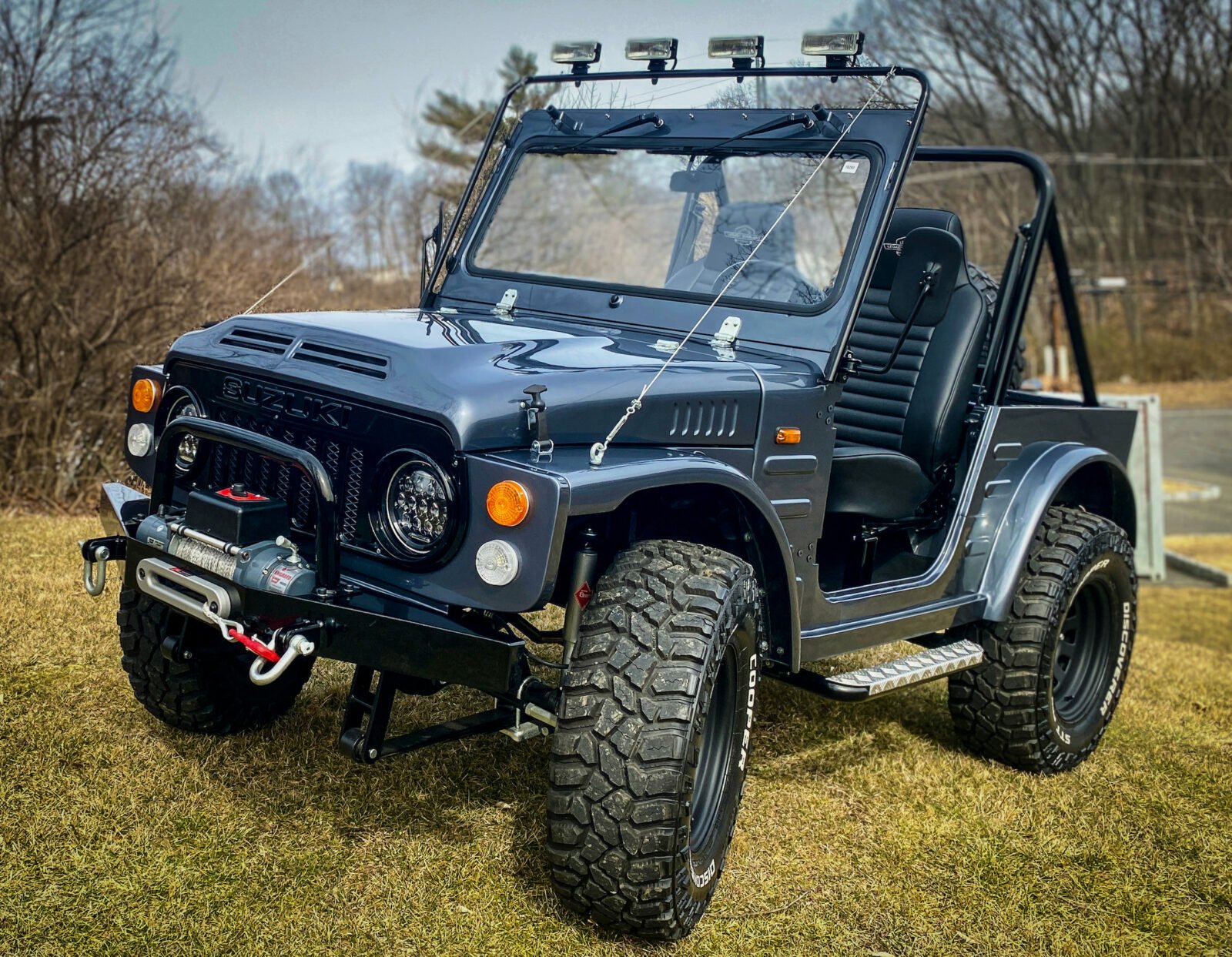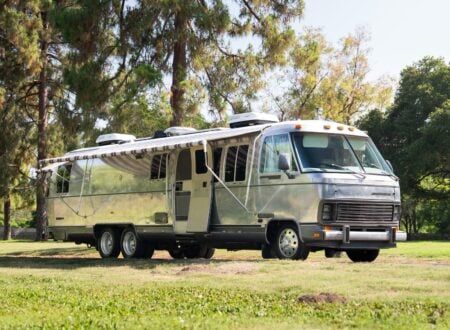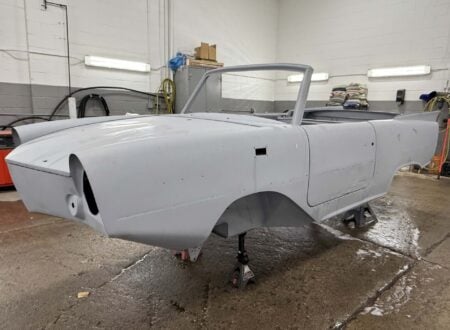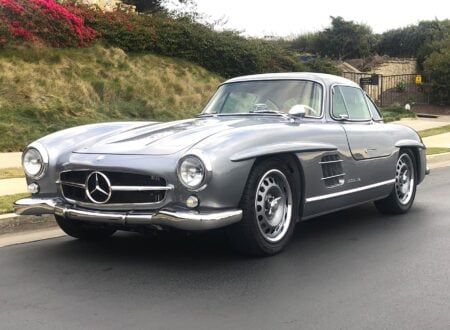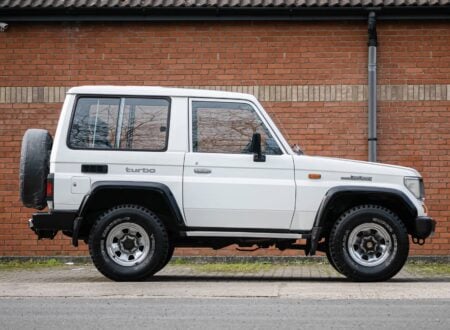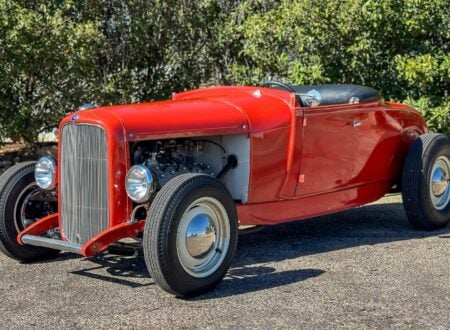This 1980 Suzuki LJ80 Jimny that benefits from a series of upgrades to further improve its off-road ability while keeping its retro charm intact. It has new intergalactic stardust metallic paintwork, a rebuilt engine and gearbox, and a heavy duty 2” suspension lift.
The Jimny is one of very few 4x4s to stick with the smaller form factor right through its production run, without succumbing to the same generation-to-generation size increases seen on the likes of Jeeps, Land Cruisers, and Land Rovers.
Fast Facts – The Suzuki LJ80
- The Suzuki LJ80 was released in 1977, it was also called the SJ20 in some export markets. It was fitted with an F8A 797cc SOHC four-cylinder four-stroke eight-valve engine which was better suited to highway use.
- The model retained the ladder frame chassis design, with live axles on leaf springs front and back, with the steel body then fitted on top. This layout was almost universal for serious 4x4s for decades.
- Whereas the original Willys Jeep and Land Rover Series 1 had started out as small, lightweight 4x4s they had evolved into much larger and heavier vehicles by the 1970s. Suzuki resisted this tendency with the Jimny model family, and even the modern fourth generation vehicle is pint-sized compared to its rivals.
- The 1980 Suzuki LJ80 benefits from a slew of upgrades over the stock vehicle, the engine and gearbox have been rebuilt, it’s been freshly painted, it has a 2” suspension lift with heavy duty shock absorbers, Cooper Discoverer STT Pro 31 x1 0.50 R15 mud-terrain tires, and a hefty sound system.
The Origins Of The Suzuki Jimny
Before the birth of the Jimny, Suzuki collaborated with Hope Motor Company, a small Japanese automaker, in 1967. Hope Motor Company produced a small 4×4 vehicle called the HopeStar ON360. Powered by a two-stroke Mitsubishi engine, the HopeStar ON360 had a limited production run and was not widely known. In 1968, Suzuki took over the project and began to refine the vehicle’s design, eventually leading to the creation of the vehicle that would become the Jimny.
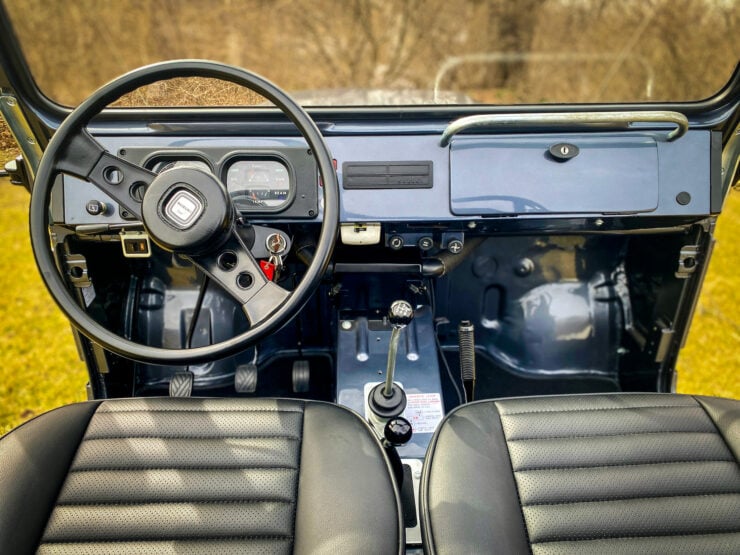

The LJ Series: LJ10 + LJ20
The Suzuki Jimny was initially called the “Light Jeep” (LJ) series, and the first model to be released was the LJ10 in 1970. The LJ10 had a 359 cc two-stroke engine, a ladder-frame chassis, live axles, and leaf spring suspension. Despite its small size, the LJ10 was a capable off-roader, and it quickly gained popularity in Japan.
In 1972, Suzuki introduced the LJ20, which featured several improvements. The engine was upgraded to a water-cooled version, and the exterior was redesigned, giving the vehicle a more modern appearance. The LJ20 was also the first Jimny model to be exported, which allowed Suzuki to expand its market presence in various lucrative foreign markets.
The Suzuki LJ80: A Pivotal Moment In The Jimny’s History
The Suzuki LJ80, introduced in 1977, marked a significant turning point in the Jimny’s development. It was the first model to be powered by a four-stroke engine, abandoning the two-stroke engines of its predecessors. The 797cc F8A engine provided better performance and reliability, addressing one of the major criticisms of the earlier LJ models.
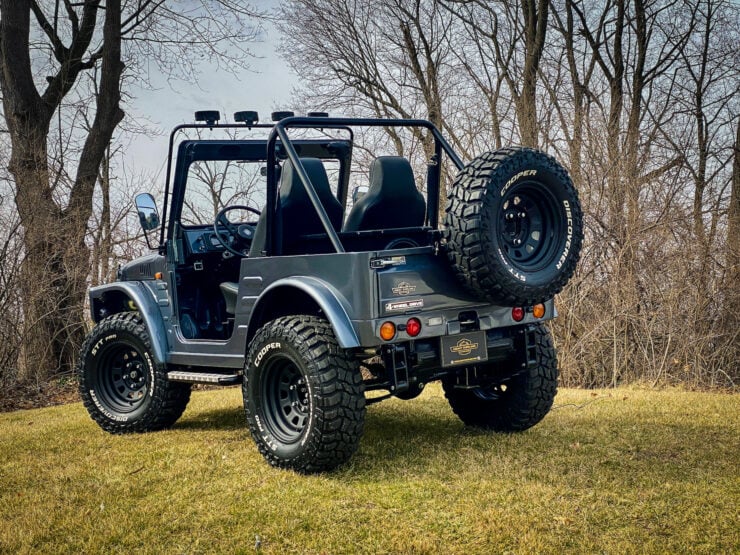

The LJ80’s exterior design remained largely similar to the LJ20, but there were some notable differences. The front grille was redesigned with a more prominent Suzuki emblem, and the turn signals were moved to the fenders. Additionally, the LJ80 had a slightly longer wheelbase, which improved stability and ride quality.
The LJ80’s off-road capabilities were also enhanced, with the implementation of a two-speed transfer case and locking front hubs. These upgrades allowed the LJ80 to tackle more challenging terrain with ease, further solidifying its reputation as a capable off-roader.
The LJ80 was popular in Japan, it also had significant success in export markets, particularly in Europe and Australia. This international success helped establish Suzuki as a global automotive brand and paved the way for the Jimny’s future evolution.
The SJ Series + The Arrival Of The JB
In 1981, Suzuki launched the third-generation Jimny, known as the SJ30, succeeded by the SJ40, SJ410, and SJ413. The SJ-Series offered more powerful engines, such as a 539cc, 550cc, and eventually a 1.3 liter engine in the SJ413. The SJ-Series also brought further refinements to the Jimny’s design, including coil springs instead of leaf springs on all four corners, which helped improved ride comfort and handling.
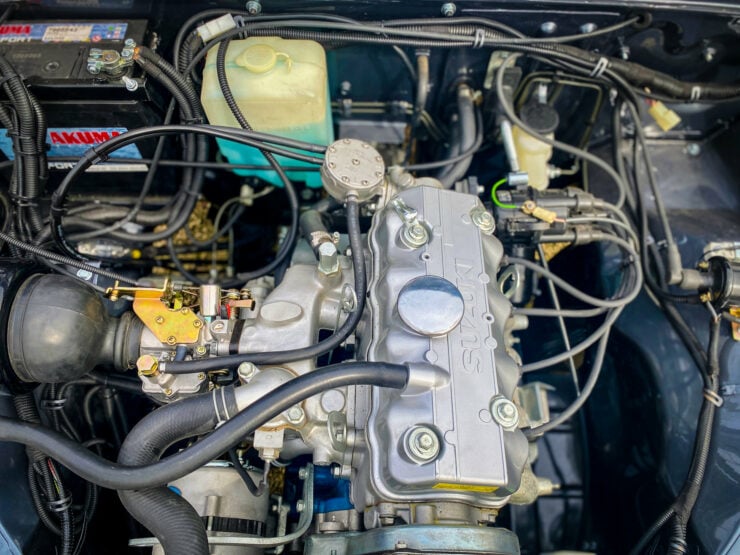

The SJ-Series models gained global recognition, thanks to their export to various countries, including Australia, Europe, and Latin America. In Australia, the SJ-Series was known as the “Sierra,” while in Europe, it was called the “Samurai.”
In 2018 the Suzuki JB series was unveiled, in the five years since it’s been the most popular Jimny (measured by demand) in the model family’s history. Waiting lists are typically measured in months, sometimes in years.
The Uprated 1980 Suzuki LJ80 Shown Here
The 1980 Suzuki LJ80 you see here benefits from a wide array of upgrades over the original vehicle that make it even more capable off-road, as well as more fun for weekend adventures. It was built by the team at Legacy Overland to be the perfect little weekend escape vehicle.
They started with a stock secondhand LJ80, it was then subjected to a full engine rebuild, a gearbox rebuild, a new carburetor was bolted into place, and a new clutch assembly was fitted. The original steel body was then repainted in intergalactic star dust metallic gray with highlights in black.


A 2″ suspension lift was then added to improve ground clearance and to ensure that the new satin back 15″ steel wheels and their Cooper Discoverer STT Pro 31 x 10.50 R15 mud-terrain tires would fit and a set of custom fabricated wheel flare arches were fitted.
A new front winch bumper was fabricated and bolted in, it’s fitted with a Warn M5000 winch that’s more than capable of pulling the LJ80 out of even the most dire mud wallows. Up top a custom light bar and four auxiliary lamps were added, and custom fabricated side runners with diamond plate steps were installed.
The original radio was deemed insufficient, so it was removed and replaced with a new Pioneer MVH-S420BT media receiver with bluetooth, it’s been hidden in the glove compartment for discretion, and it’s hooked up to a custom sound box upholstered in fabric with 1,000 watt sub woofer and 300 watt speakers.
Up front the Suzuki has sports bucket seats, a restored gauge cluster and gauges, black fiber carpeting, galvanized hardware throughout, and a custom made bikini top. It’s now being offered for sale by Legacy Overland and you can visit the listing here if you’d like to read more or enquire about buying it.
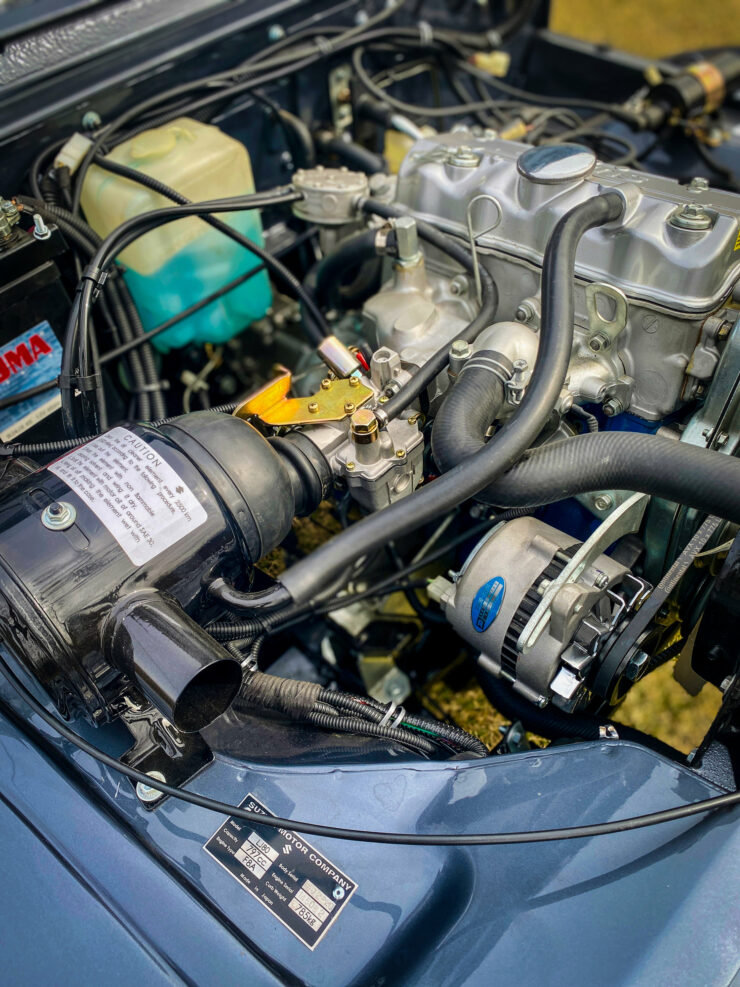
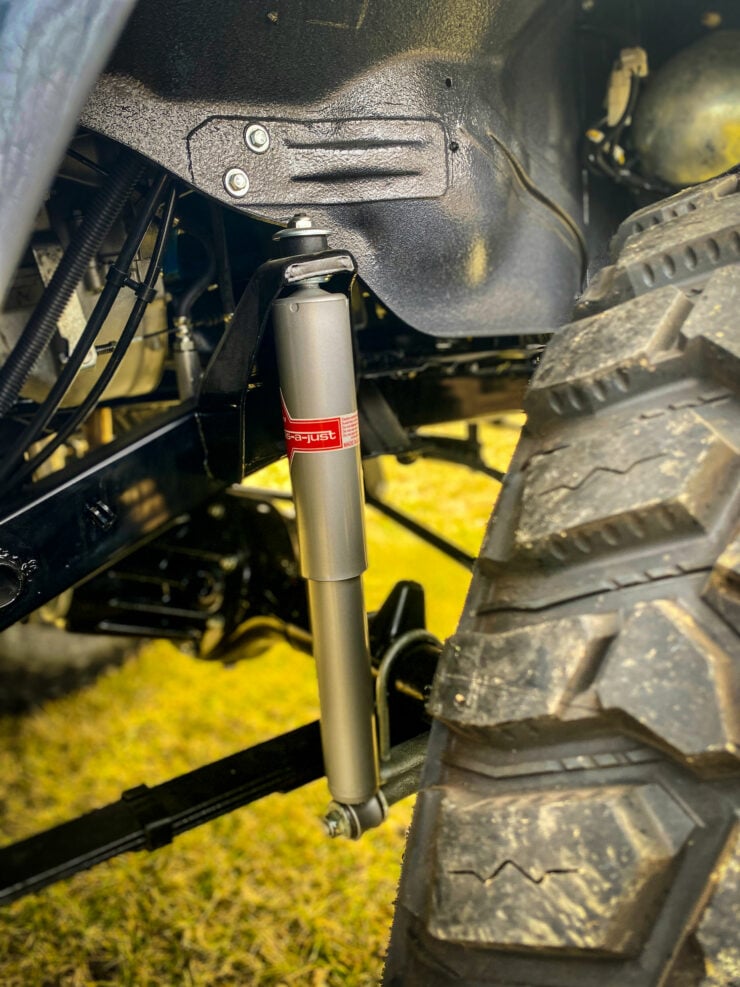
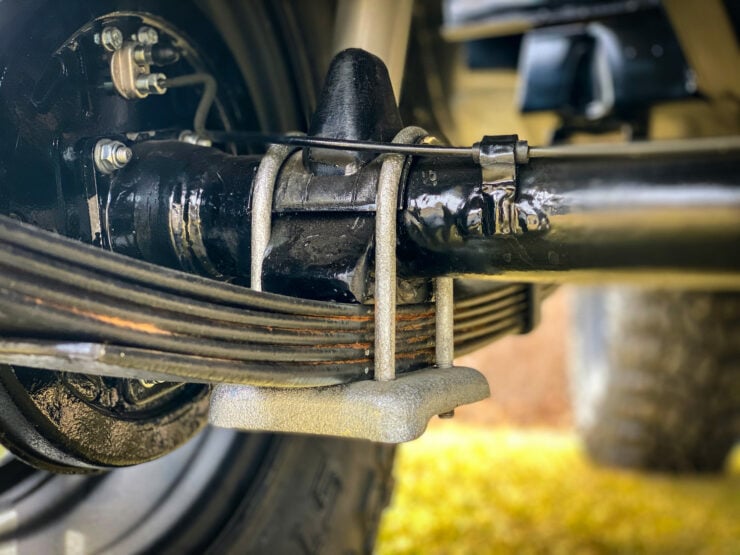

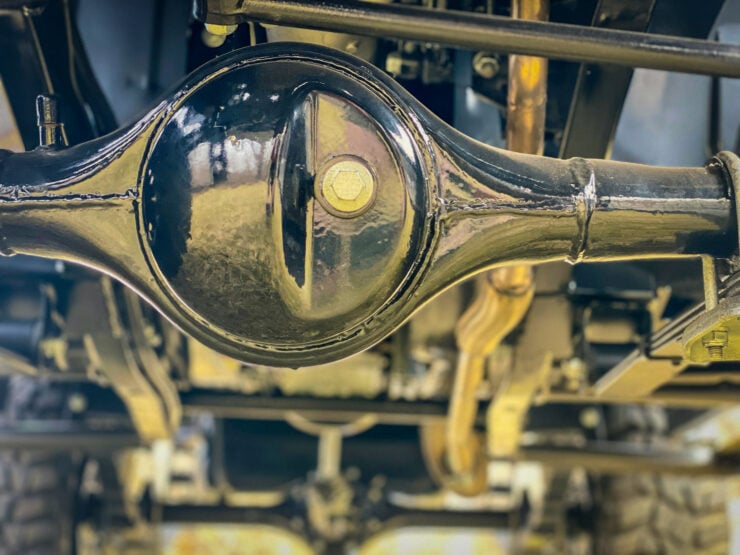
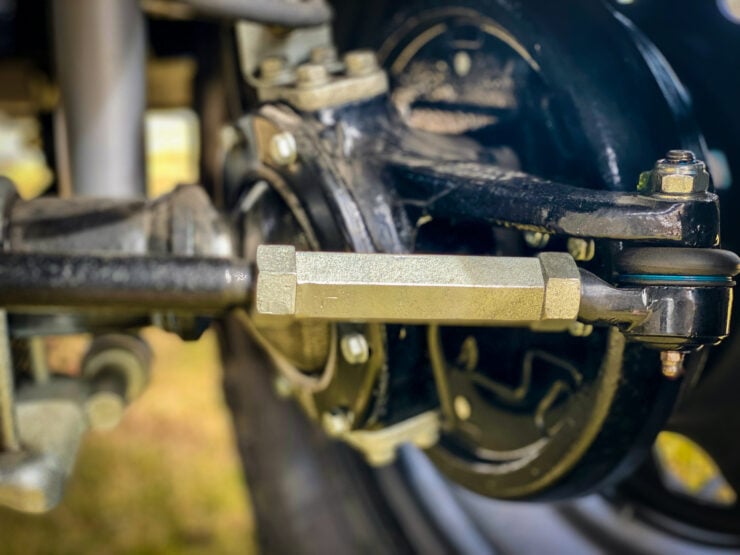
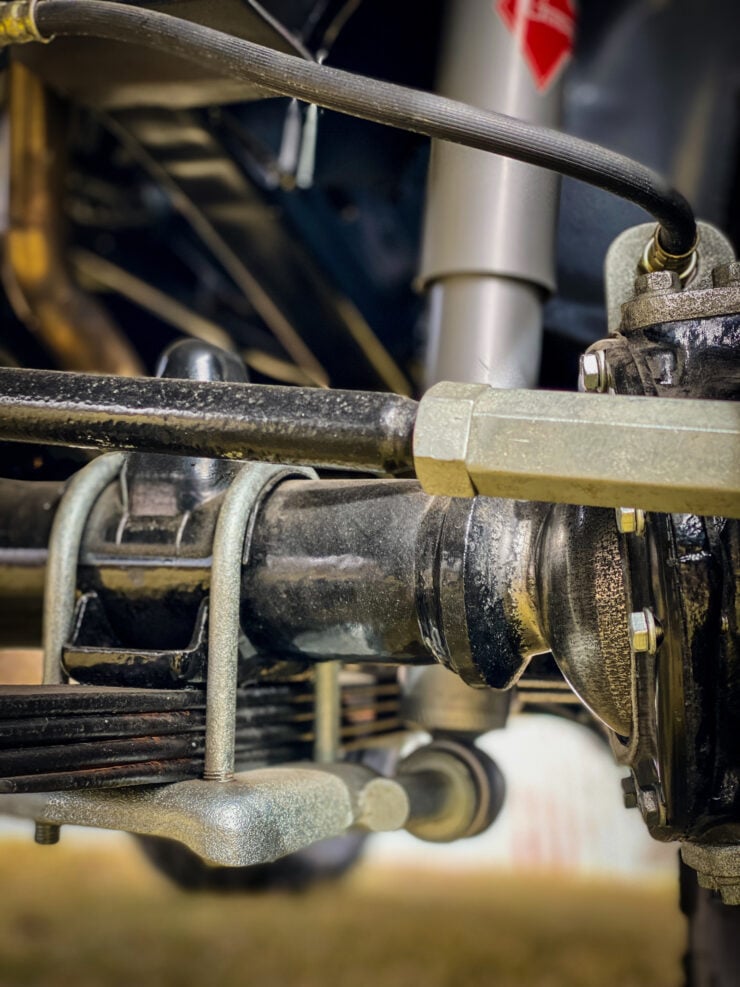
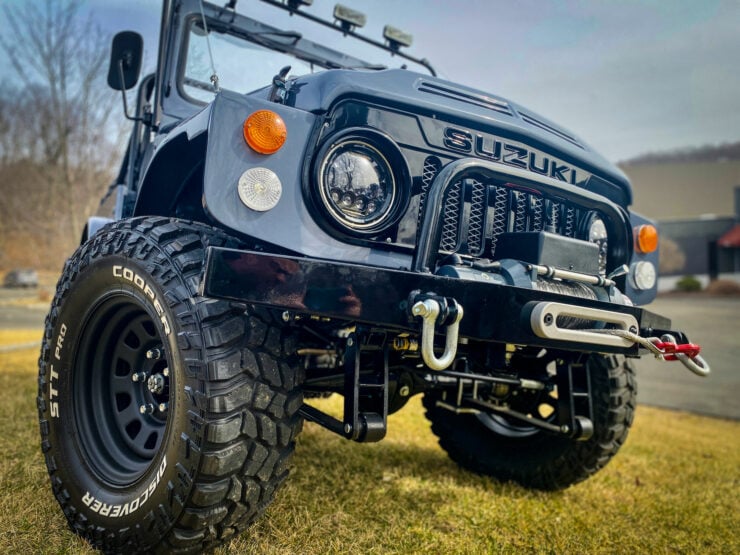

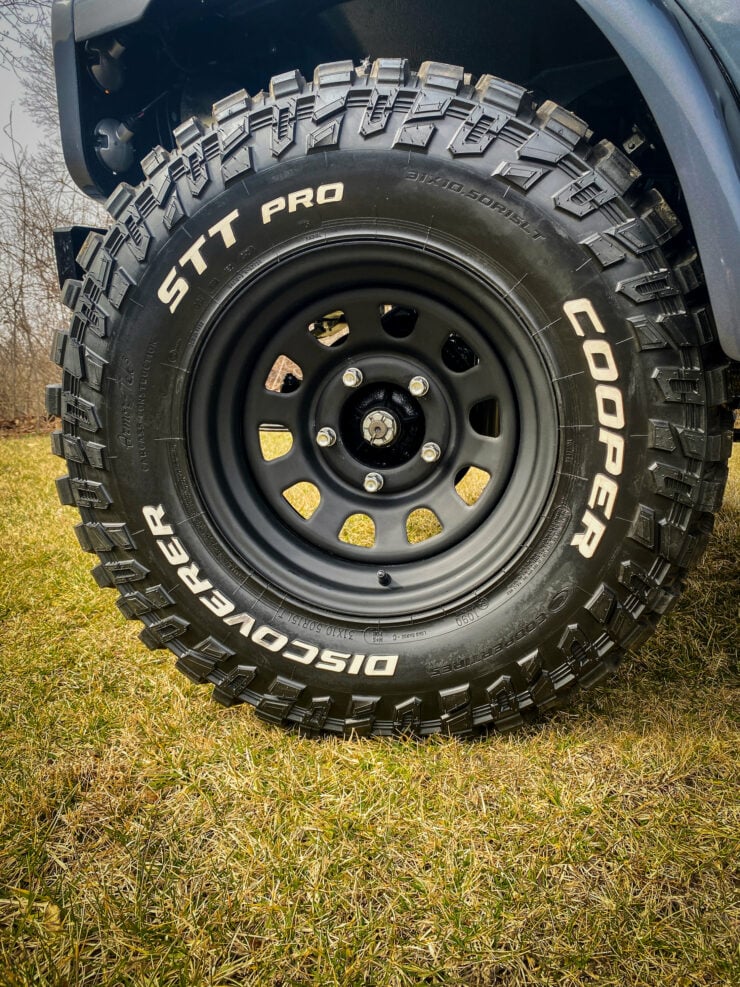
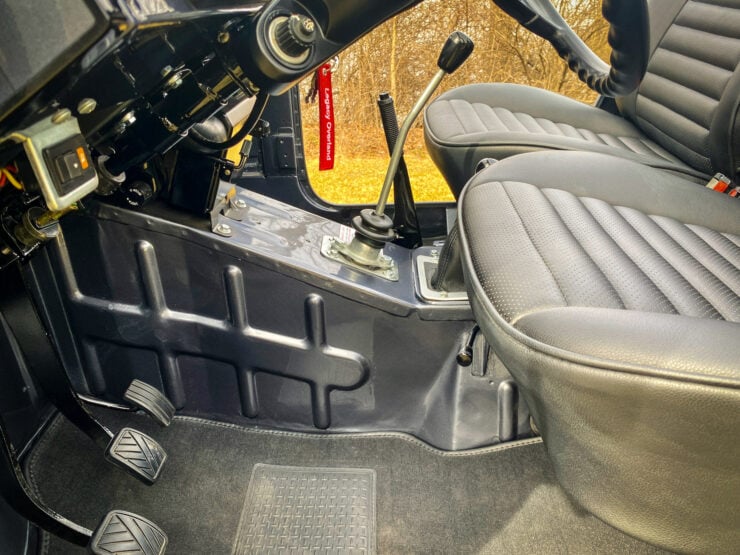
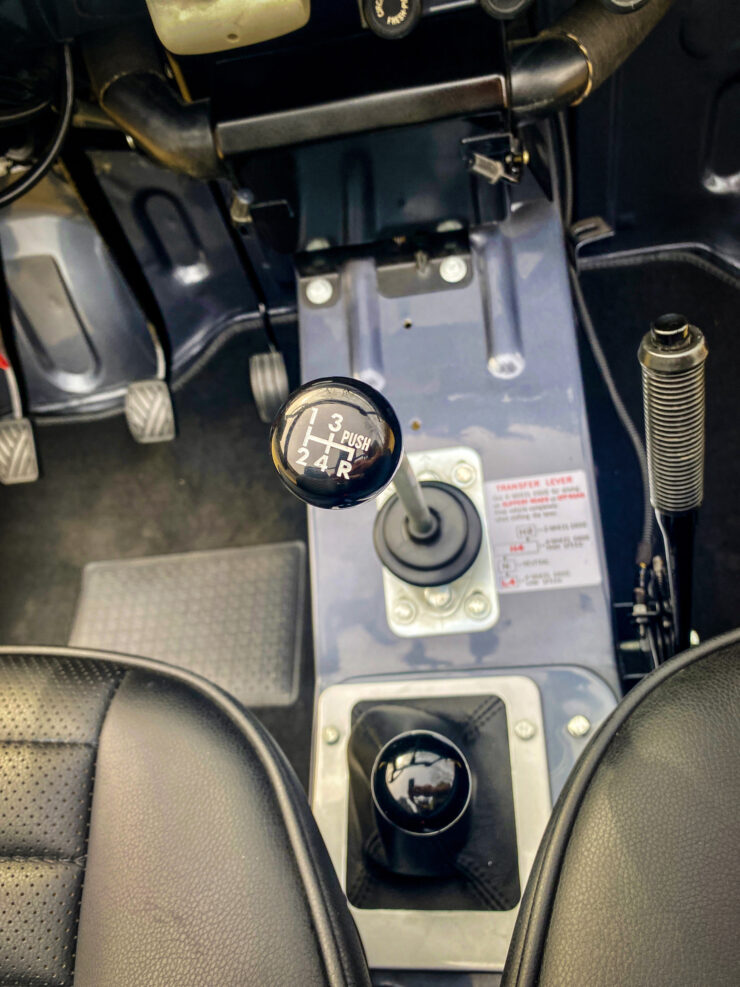
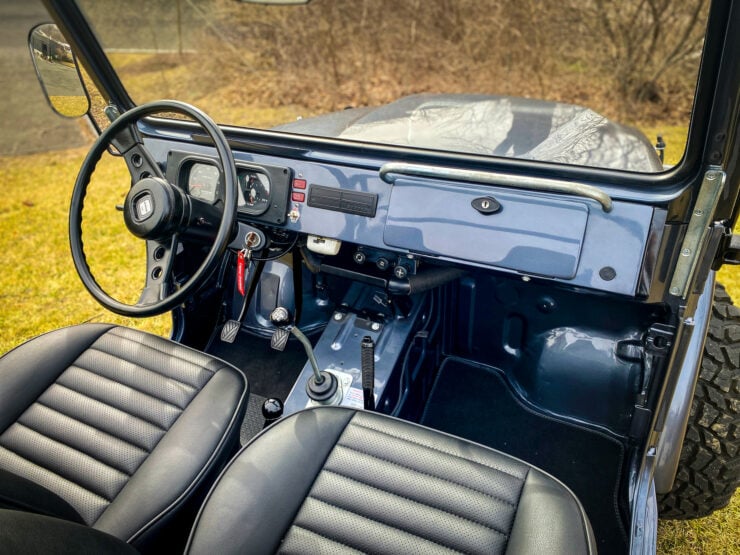
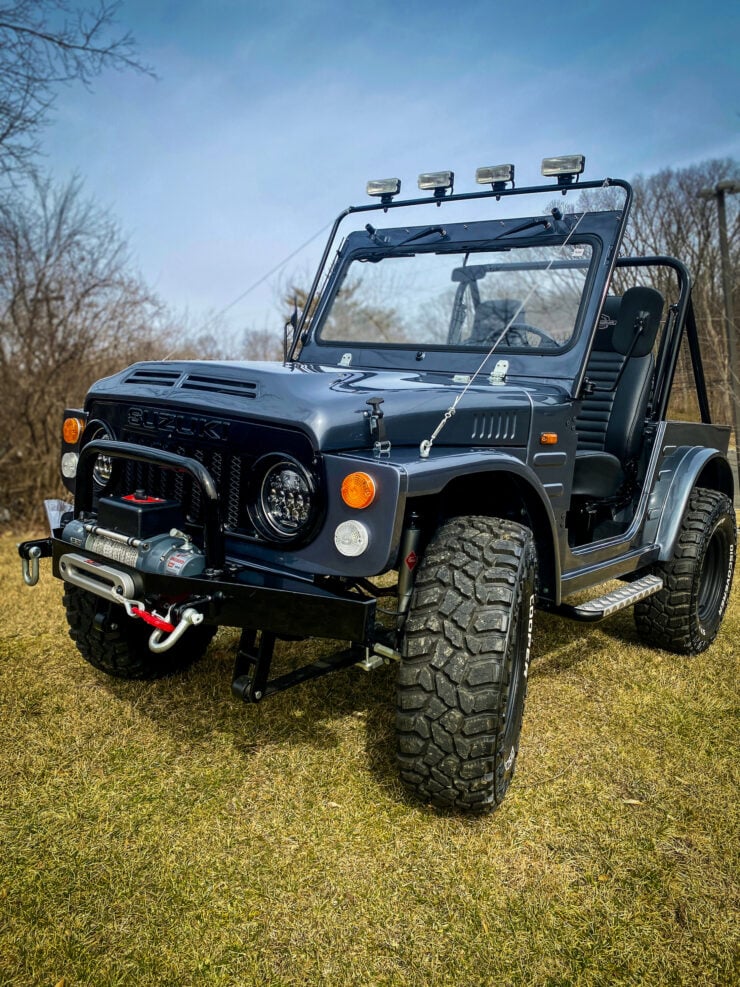

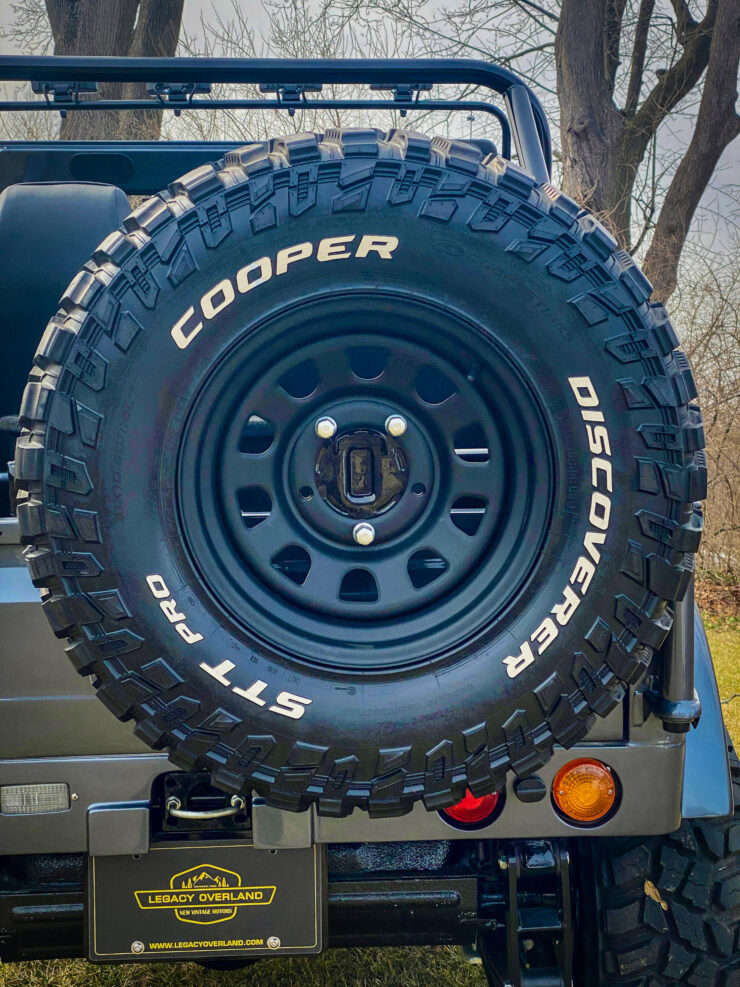

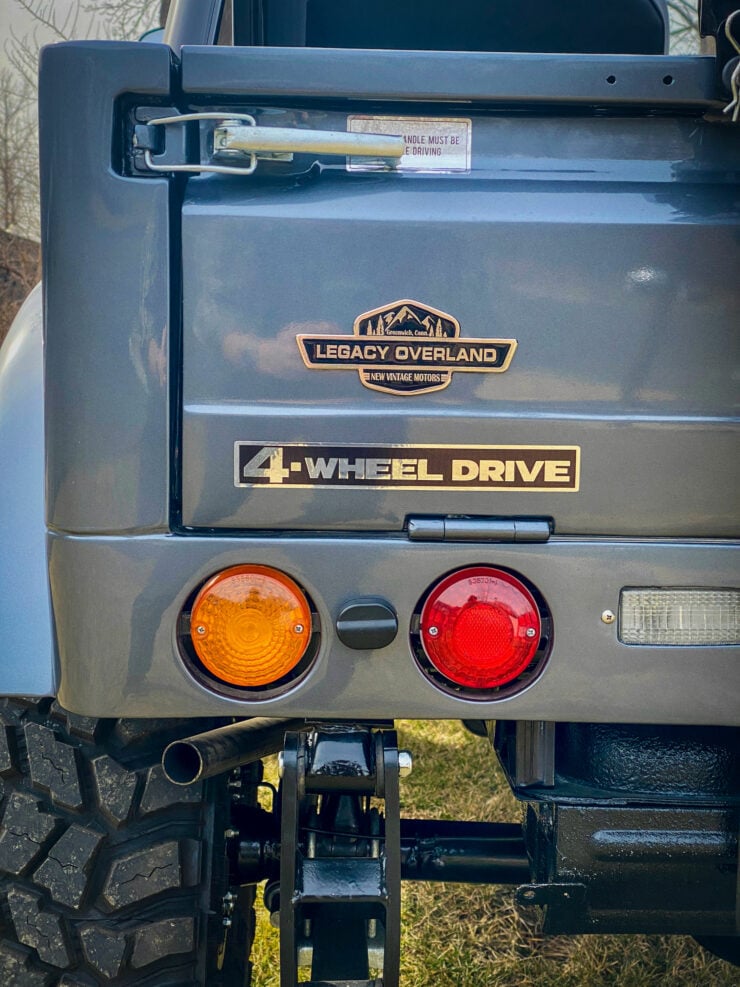
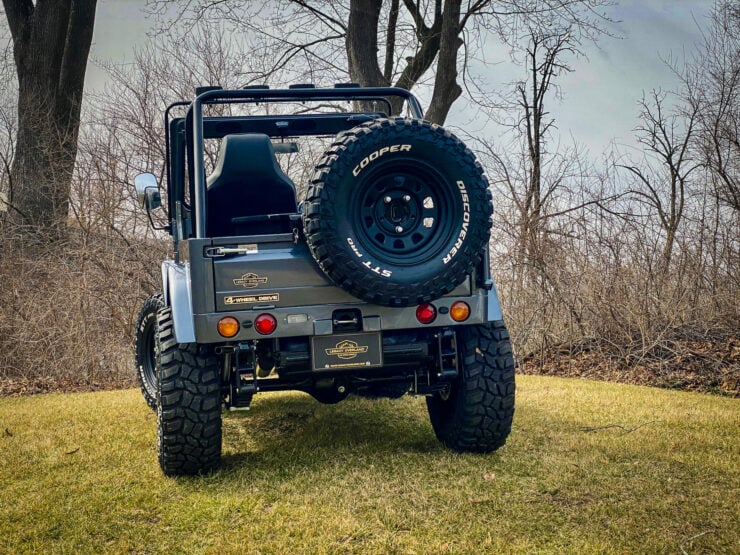
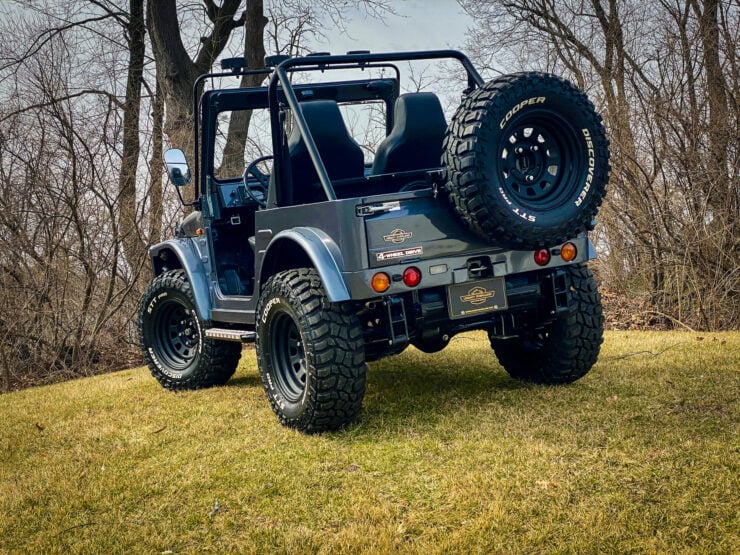
Images courtesy of Legacy Overland

